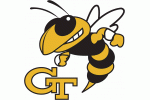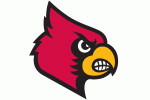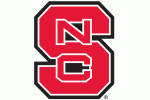Here we go.
/cdn0.vox-cdn.com/uploads/chorus_image/image/53661005/usa_today_9928905.0.jpg)
I’d be more comfortable with declaring us ready to go toe to toe with the Gators if it weren’t for Isaiah Wilkins managing just five tepid minutes against UNC-W and then declaring himself out until next weekend. Without Wilkins, we lose a valuable offensive rebounder and glue guy, a first-team All-ACC defender, and the emotional bedrock of the team. Without him, everyone else is going to have to step into those roles collectively.
Mike White has Florida in the NCAA Tournament and primed to make a run in year two, and has become a media darling for how the Gators have shrugged off Billy Donovan’s departure to Oklahoma City without missing a beat. Florida is 25–8 for the year, went 14–4 in the SEC, and toughened themselves for the postseason on an ambitious non-conference slate that featured six eventual NCAA Tournament teams in 12 games. They went 3–3, beating Florida Gulf Coast, Miami, and Seton Hall and losing to Duke, FSU, and Gonzaga.
Stylistically, Florida under White isn’t far removed from Florida under Billy Donovan. The Gators like to run high pick and rolls with wings spread wide, and use the driving lines created by those to send their quick, athletic guards on rim runs. They prefer to get shots quickly (their average possession takes 16 seconds), though I wouldn’t call them a transition-oriented team like say, a VCU under Shaka Smart. It’s more that they’re opportunistic and decisive.
Florida’s offense was the third-most efficient in the SEC (1.09 ppp), and they scored 1.03, 1.04, and 1.05 per possession against FSU, Duke, and Miami respectively. Their efficiency is well-rounded: they avoid turnovers (just 16.8 percent of their possessions), are solid on the offensive glass (32.1 percent), and finish pretty well around the rim and outside (36.1 percent on three-pointers, which make up 36.8 percent of their shots).
The two key Gators on offense are the backcourt of 6'2'’ KeVaughn Allen and 6'0'’ Kasey Hill. Allen leads the team in scoring (13.7 ppg) and is their best and most consistent perimeter threat (72 three-pointers, 38.7 percent), which is an important skill for a team with a lot of guys that can make threes (six players have 10 makes) but not a lot that can make them consistently. Hill keys everything, running the majority of the pick and rolls from the top and setting up teammates (4.6 apg, 29.4 percent AST rate) without many mistakes (a 24.9 percent TO rate). The wings are Devin Robinson (11.3 ppg, 39 percent 3PT) and Canyon Barry, who is the team’s second-leading scorer (11.9 ppg) despite playing barely more than 20 minutes per game.
The Gators are missing a key cog up front just like we are, only they’ve had more time to get used to it. Forward John Egbunu?—?their best rebounder (6.6 rpg) and shot blocker (1.5 bpg)?—?tore his ACL in February, leaving 6'9'’ sophomore Kevarrius Hayes and 6'8" Justin Leon to hold court in his place. Hayes is springy and adds an offensive rebounding element that UF didn’t have a lot of (he grabs 12 percent while he’s in), but he’s still raw offensively. Leon (42 3’s, 39.3 percent) is stretchier.
Defensively, UF is fourth nationally in efficiency (89.7). The Gators apply pressure starting at least at three quarter court, looking to force turnovers quickly (they’ve been successful 21.2 precent of the time). When they recover (which they also do well), they pick up behind the arc, forcing opponents to start their offense further out than they like and preventing good looks at threes (UF opponents have made just 31% of their three-pointers, which account for just over a quarter of their shots?—?a really low number for college hoops in 2017). Egbunu was a tree around the basket, but Hayes blocks almost 10 percent (9.7 to be exact) of opposing twos when he’s on the floor and has done an admirable job filling in.
Florida poses a lot of the same challenges as Wilmington (pressure defense, a spread offense, a quick tempo), only they do it with bigger and better players than the Seahawks did. We’ll likely need to go small again (though Jack can and will play against Hayes and maybe more if he’s moving well) and I wouldn’t be surprised to see us continue to switch on screens. While CTB hates it, it worked well vs. UNC-W and could help us keep Allen and Hill from getting into the lane.
On offense, my biggest worry when we face a high-pressure team isn’t turnovers?—?we’re not really a high turnover group and half of our team has point guard skill or experience?—?it’s pace. Pressure knocks us back on our heels just enough that we initiate the offense late and find ourselves working against both the opposing D and the shot clock. It becomes a strain to get good shots. We found some success pushing it some against Wilmington, and while I don’t want to get into a track meet with a team that’s comfortable running, I also want us to score enough points to win. There’s a happy medium in there between giving up our control of tempo and choking ourselves with it.
Virginia Eights:
G: London Perrantes?—?6'2'’ sr #32
London got to the rim, got to the line, got the ball to his teammates, and got us the win in round one. Perhaps most impressive was that he only turned it over once in 33 minutes.
G: Devon Hall?—?6'5'’ jr. #0
Perhaps in a nod to Isaiah’s illnesses, Devon has six offensive boards in our last three games, filling yet another stat line.
G: Kyle Guy?—?6'3'’ fr #5
I thought Kyle was going to go off on UNC-W when he opened the game with a corner jumper. It turned out to be a quiet afternoon thanks to some mild foul trouble.
G: Darius Thompson?—?6'4'’ jr #51
Darius was one of our MVPs against Wilmington for how he was able to switch on to anyone on the perimeter, move his feet with them, and then contest the shot. He’ll be tested again tomorrow as the primary defender on Allen.
F: Jack Salt?—?6'11'’ so #33
Jack’s ability to recover around the rim and be vertical (UF attempts more than 40 FTs per 100 FGs, which is a lot) will factor in tomorrow.
F: Marial Shayok?—?6'5'’ jr #4
Marial! My man! Of course I didn’t think you weren’t going to factor in to another game this season. Marial scored 23 against UNC-W; he scored 22 (10–26 from the floor) total in our previous six games.
G: Ty Jerome?—?6'5'’ fr #11
Ty was quiet in round one: five points in 22 minutes and no assists for the first time in four games.
F: Mamadi Diakite?—?6'9'’ fr #25
This wasn’t a game for our bigs, and so Mamadi played single-digit minutes against UNC-W, his first such appearance since Feb 1st vs. VT.
UF Eights:
G: Kasey Hill?—?6'1'’ sr #33
Can’t really shoot with range, but is a great finisher around the rim (62.5 percent) that gets to the line on the regular. Has great vision, is inclined to drive to pass as much as shoot.
G: KeVaughn Allen?—?6'2'’ sr #5
UF fans want him to shoot more frequently. I get it; he’s a good shooter inside and out and an 88 percent FT shooter.
G: Devin Robinson?—?6'8'’ jr #1
A tweener who becomes UF’s big when they go small, Robinson is a low-volume, high-accuracy 3PT shooter and an athletic slasher off the dish. A good defensive rebounder (18.3%) for a wing.
F: Justin Leon?—?6'8'’ sr #33
A stretch four, Leon has taken 107 of his 186 shots this season from deep, making 42. He’s not a rebounder or much of an interior defender.
F: Kevarrius Hayes?—?6'9'’ so #13
Hayes is shooting 74 percent at the rim and grabbing 12 percent of offensive rebound chances, so the mission for Jack seems clear: keep a body (but not too much of one) on Hayes and limit the damage he does within three feet.
G: Chris Chiozza?—?6'0'’ jr #11
Chiozza is the first guard off the bench and keys their small lineups; it’s when he and his 3.7 assists per game move Hill off the ball so he can slash that UF’s offense takes off.
F: Keith Stone?—?6'8'’ fr #25
Stone reminds me some of freshman year Elton Brown: he doesn’t have his body or motor right yet and likes to shoot threes (30 percent) more than he probably should.
F: Canyon Barry?—?6'6'’ sr #24
Rick’s kid (yep, another one) is not a really efficient scorer (42.2 percent overall, 34 percent on threes), but he gets it done.
Verdict:
Flip a coin. Seriously. Ken Pomeroy had us winning 60–59 before Isaiah’s status was revealed, flipped it to 60–59 UF afterward, and still calls it a 50/50 game on his site. I think we have the guys to compete and win if we can control the tempo and keep UF’s guards out of the lane. Big ifs, but doable ones.
















